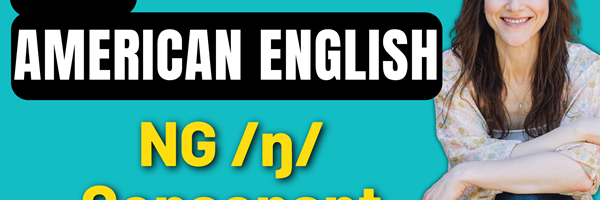(Video Transcript)
Sue, zoo
Loose, lose
Price, prize
Let’s learn how to pronounce the S and Z consonants in American English.
How to pronounce the S /s/ and Z /z/ consonants
The S and Z consonants are very similar.
They share the same lip, tongue, and jaw placements, which means they are made in the same place in the mouth. Watch as I say the two sounds, and you’ll notice that my mouth is in the same position for both sounds.
S, Z, S, Z
They also share the same type of air release or manner. The air release is noisy, turbulent, and constant.
S, Z
But where they differ is voicing. The S consonant is a voiceless consonant, which means it is made with just air passing through the vocal cords and out of the mouth. The vocal cords are turned off as you say this sound.
S.
The Z consonant is a voiced consonant. This means the vocal cords are turned on as you say this sound, and you should feel a vibration in the throat when you say it.
Z.
There are two ways to pronounce the S and Z consonants. Both methods begin the same way.
The jaw opens slightly. The tongue is in a wide shape, and the tongue is high in the mouth. The sides of the tongue push against the gum line of the roof of the mouth, where the gums meet the upper teeth. This leaves a passage for the air to travel down the middle of the tongue.
The lips open slightly, and the corners pull back into a slight smile.
Some native speakers make the S and Z consonants by pointing the tongue tip down and lightly resting the tongue tip on the back of the bottom front teeth.
Ssss.
Other native speakers point the tongue tip up, just behind the front teeth, close to the bumpy ridge behind the front teeth but not touching it.
Sssss.
I typically point my tongue tip down when I make the S and Z consonants, but sometimes it depends on the other sounds that occur in the word.
Watch an animation of the S and Z consonant sounds. This animation was created from actual videos of a real person pronouncing the S and Z sounds. The animation shows the side view of the person's face, and I slowed it down to half speed. This particular speaker of English points her tongue tip up towards the back of the upper front teeth as she pronounces the S and Z sounds. First you’ll see the S consonant sound. Watch how the tongue tip moves up. The animation shows light contact between the tongue tip and the boundary between the alveolar ridge and the upper front teeth. This may be possible for some speakers due to natural variations in how these sounds are pronounced, but it’s very important to remember that no matter where your tongue tip is pointing, down or up, there is no stop of airflow. The airflow is continuous for both the S and Z consonants.
Now the Z consonant. Notice the same tongue and mouth placement, but you’ll hear voicing or vocal cord vibration.
When making the Z consonant, you should feel vibration in two places: in the throat and in the space between the tongue tip and the back of the front teeth. This is the vibration of the air as it is exiting the mouth.
The S consonant does not have vibration because it is a voiceless sound, so the vocal cords are turned off as you say it.
Let’s take a closer look at the S and Z consonants.
S /s/ and Z /z/ consonants: Up close and in slow motion
Here is the S sound in isolation. Notice how the lips spread into a slight smile, and the tongue tip is pointed down.
Now the word ice. Again, you’ll see the lips spread into a slight smile, and the tongue tip point down.
Now the word please. You can’t see the vibration, but since this word has the voiced Z consonant, the vocal cords are vibrating as I say it, and there is a secondary vibration in the space where the air exits the mouth, between the tongue tip and back of the front teeth.
S /s/ and Z /z/ consonant practice
Let’s practice a few words together. Say the words with me. We’ll start with the S consonant.
Say, S, say
Listen, S, listen
Loss, S, loss
Now the Z consonant. Feel the vibration of the vocal cords in your throat and in the space where the air exits the mouth.
Zipper, Z, zipper
Music, Z, music
Toes, Z, toes
Thanks so much for practicing the S and Z consonants with me. I hope this video was helpful! But we don’t have to end the practice here - let’s keep working together! Check out the additional practice videos of the S and Z consonant sounds in English Pro, my comprehensive online accent training community. The details on how to enroll in English Pro are in the description below. Thanks, and have a great day!
And I'd love to hear from you - contact me to learn how we can work together to perfect your American English pronunciation!



